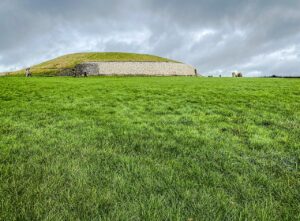The 2025 ICLAFI Symposium and Annual Meeting was hosted by ICOMOS Ireland, and took place in Dublin, Ireland. The symposium was on Thursday and Friday, 25–26 September, with the annual meeting taking place on Friday afternoon.
Symposium theme
The theme for the 2025 symposium was cultural rights.
The placement of communities at the centre of heritage management means that the models we provide for public engagement around place need to provide for active and co-participative community involvement rather than a consultative type of engagement. The theme of the symposium concerned cultural rights and a review of the kind of supporting mechanisms which enable the effective involvement of communities in heritage management.
The work of community engagement in relation to cultural heritage aspires to:
- become a vehicle for ensuring that Communities benefit from the World Heritage in accordance with Article 5(a) of the World Heritage Convention, 1972, by giving ”the cultural and natural heritage a function in the life of the community”;
- recognize and value the local community as key actors in the process of sustainable heritage management;
- encourage mutual understanding and collaboration concerning World Heritage;
- seek to establish constructive dialogue methods between all stakeholders in the Framework of Governance for World Heritage Properties; and
- seek to ensure that all those who have an interest or a connection with the World Heritage and those affected by the management of the Property may be recognized.
ICLAFI members were invited to consider the following issues:
- Are there any legal or administrative provisions in your country that support the right of access to cultural heritage, or the right to participate in management of cultural heritage?
- Do these provisions specifically refer to the right of access to cultural heritage or the right to participate in its management?
- Do legal or administrative provisions in your country refer to the right to heritage only as a component of the right to participate in cultural life, freedom of expression, association, and creative expression in an indirect manner? Has provision been made in law or practice in your country concerning historic rights or customary traditions?
- Has your country adopted strategic documents that aim to protect cultural heritage by involving heritage communities?
- Do cultural heritage policy or administrative measures support the activities of “heritage communities”, for example, through particular types of working methodologies, capacity training or funding measures to facilitate rights to participate in decision-making?
- Do heritage experts, interested members of the public, and heritage volunteers participate in developing national, regional, or local heritage policies and actions?
- What are the key achievements of your country’s efforts to encourage heritage communities’ participation?
- What are the primary obstacles to enhancing the role of heritage communities?
- What key priorities should be addressed to encourage the participation of heritage communities in the future? What actions should be taken, and who should be involved?

Heritage tour
A heritage tour took place on Saturday, 27 September 2025, visiting Brú na Bóinne, a Neolithic monument complex and ritual landscape in County Meath, at a bend of the River Boyne. Brú na Bóinne was designated a UNESCO World Heritage Site in 1993. Participants also visited the Hill of Tara, another ancient ceremonial and burial site traditionally regarded as the inauguration place and seat of the High Kings of Ireland. It is one of the Royal Sites of Ireland on the Tentative List for World Heritage.
The image at the top shows Sí an Bhrú or Newgrange, a monumental prehistoric passage tomb which is part of the Brú na Bóinne complex. Photograph by Giorgio Galeotti (CC-BY 4.0).